Family: Cupressaceae
Common name: Western redcedar
E-flora BC: https://linnet.geog.ubc.ca/Atlas/Atlas.aspx?sciname=Thuja%20plicata
Wikipedia: https://en.wikipedia.org/wiki/Thuja_plicata
Western redcedar has a central place in First Nations culture in our area. Its root and bark fibers are used for weaving many different items. Its wood is used as construction material for long houses, canoes, totem poles and many other things. Cedar boughs and foliage are used for ceremony and medicine. Western redcedar is sometimes referred to as the Tree of Life, as it provides so much benefit to the people.
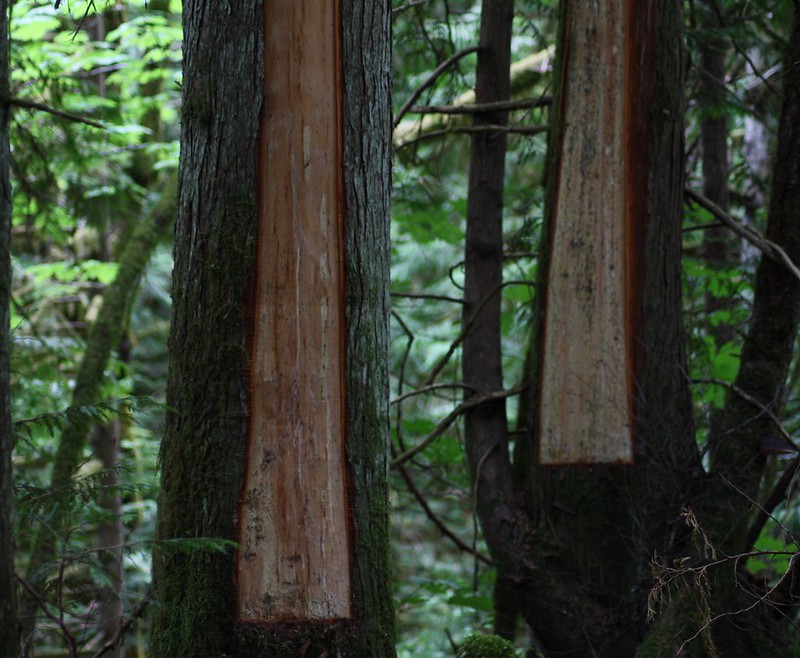
Western redcedar prefers moist sites in our forests. As the climate changes, and our summers become warmer and drier, the distribution of western redcedar is likely to become more restricted, while drought tolerant trees such as Garry oak (Quercus garryana) might become more widely distributed.

If you’re walking in a forest of large trees, where the foliage is not easily observed, then you can identify western redcedar by its fibrous ‘stripey’ bark.
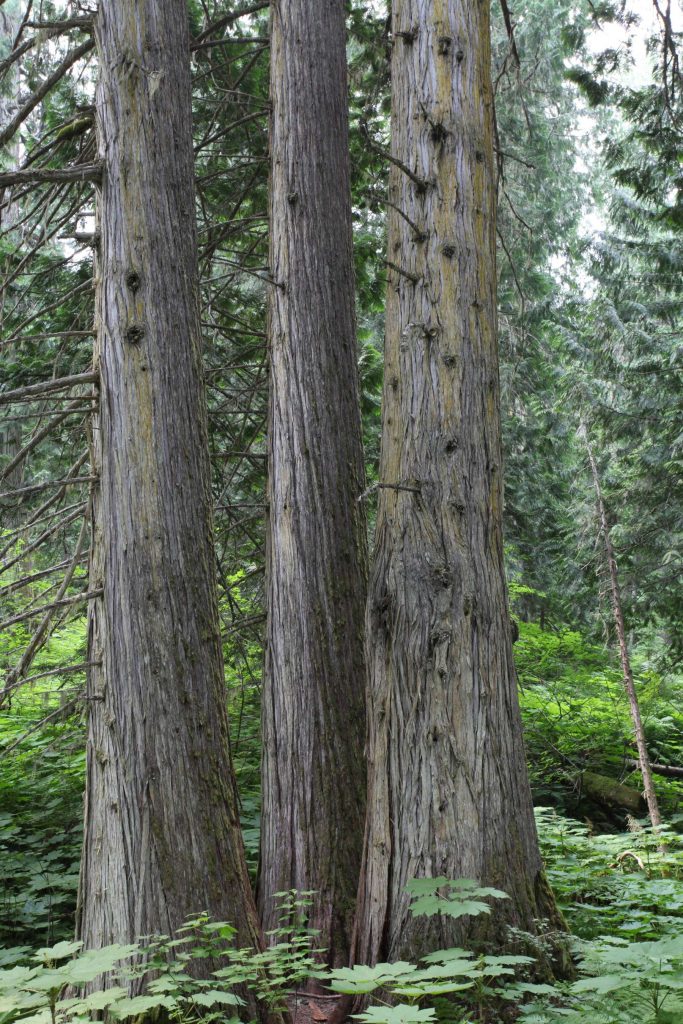
The foliage of western redcedar is distinctive. Though its a conifer like Douglas-fir, shore pine and western hemlock, it doesn’t have needles. Rather, its leaves are modified into tightly overlapping scales.
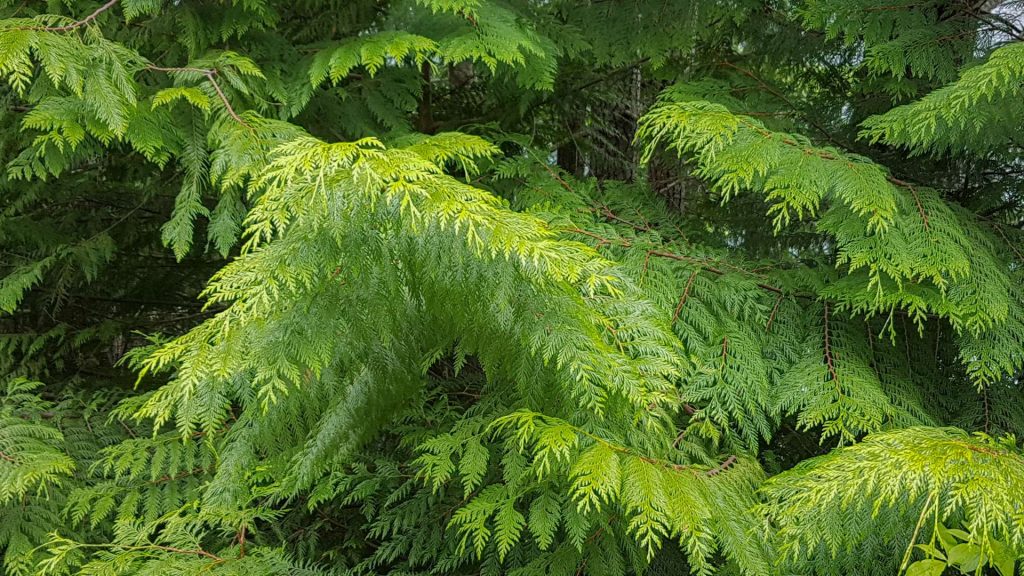

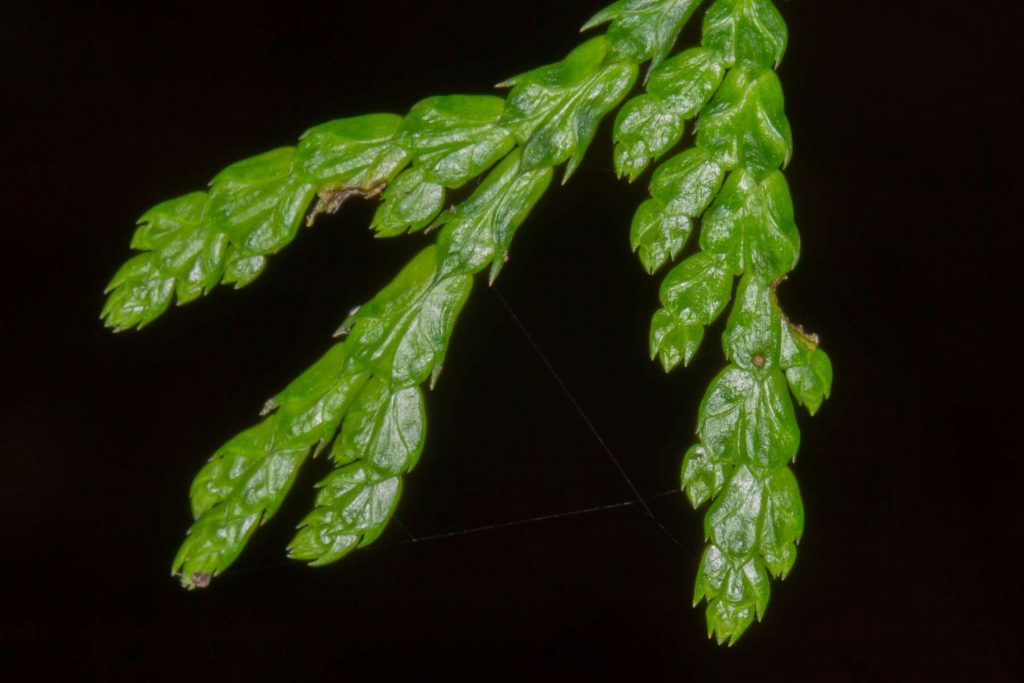
Like other conifers, western redcedar has pollen-bearing and (egg) seed-bearing cones. Both are small, especially the male pollen-bearing cones are tiny.

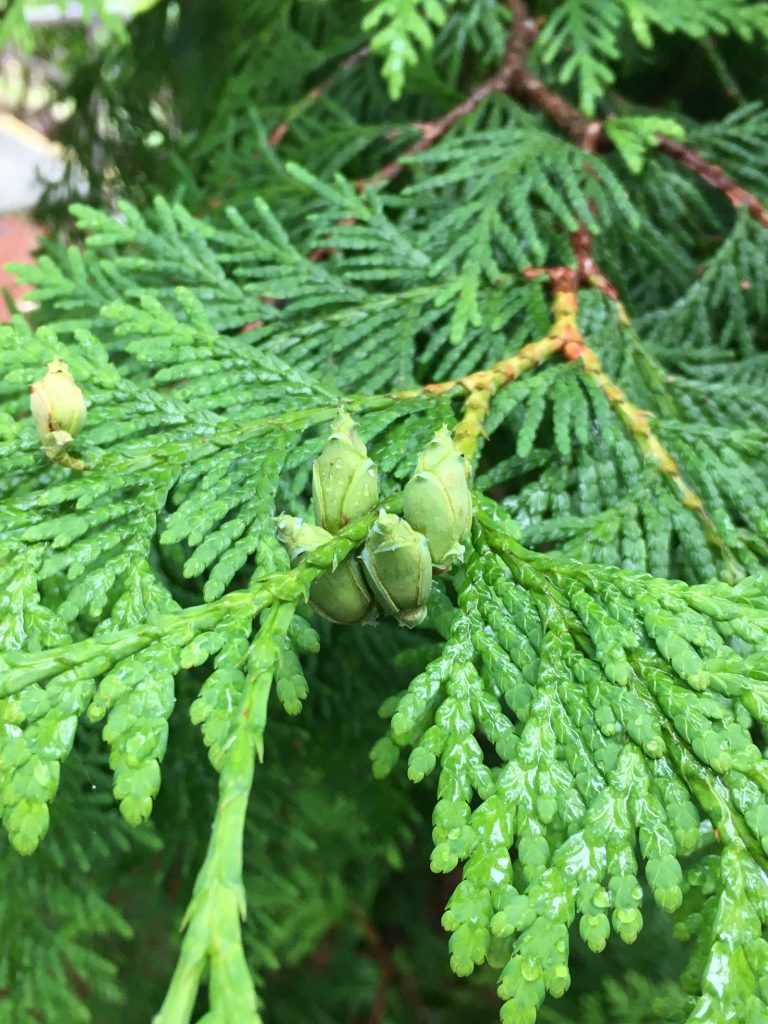
As in shore pine, the female cones remain on the tree long after the seeds have been released. You can often spot clusters of brown, open cones in the foliage of western redcedar.
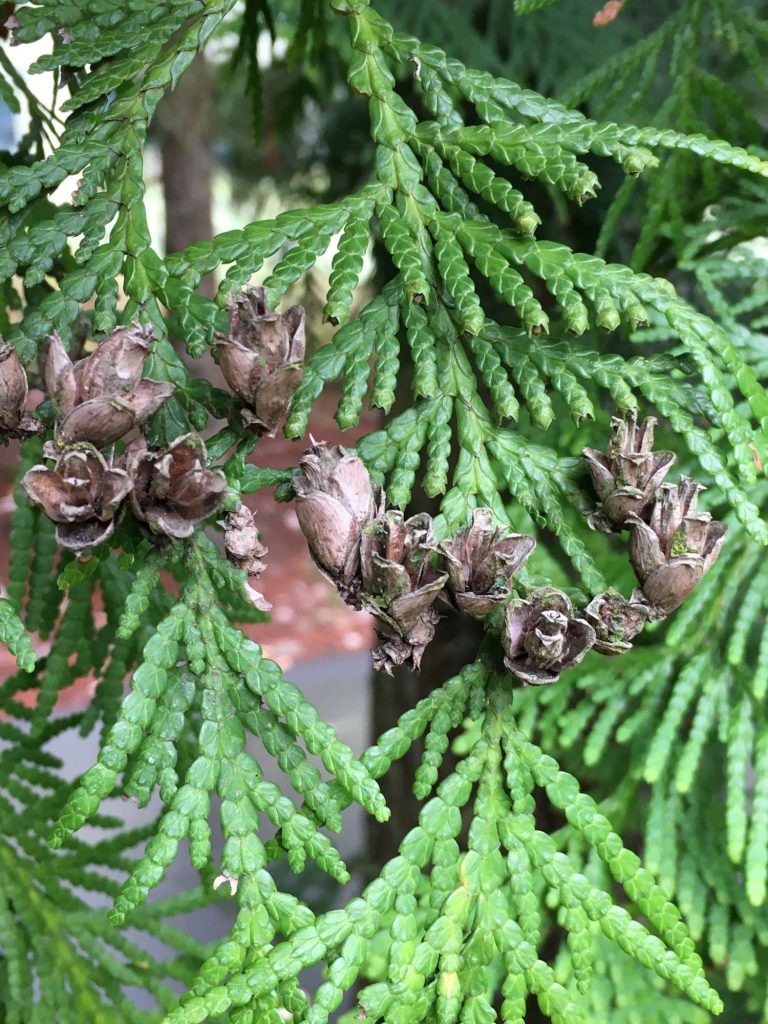
Take some time to educate yourself not only about the biology of western redcedar, but about its cultural significance in our area. It’s truly a remarkable tree. Western redcedar was adopted as British Columbia’s provincial tree in 1988.
For a comparison between leaf/needle and female cone characteristics of the four conifers listed on this site, please see this conifer comparison page.